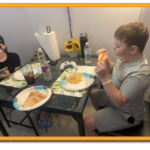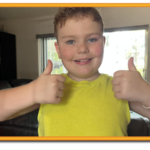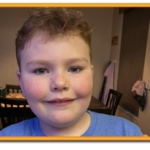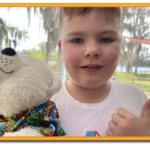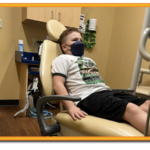Acute lymphoblastic leukemia (ALL) happens when the body makes too many lymphoblasts (a type of white blood cell). It's the most common type of childhood cancer. ALL is also called acute lymphocytic leukemia and acute lymphoid leukemia. ALL can affect different types of lymphocytes (B-cells or T-cells).
B-Cell Acute Lymphoblastic Leukemia in Children
Getting a Diagnosis
To find out whether your child has B-cell ALL, the doctor may ask you questions like:
- When did you notice a change in your child?
- What symptoms does your child have?
- Does anyone in your family have ALL?
- Does your child have Down syndrome or any other genetic disease?
The doctor may do blood tests to find out whether your child has ALL, and if so, what type it is. They use blood tests to check the number of blood cells and look for sick white blood cells.
Your child might also need a bone marrow test. The doctor will take samples of the bone marrow, usually from their leg or spine.
For this test, your child will lie down on a table and get a shot that will numb the area. Then the doctor uses a very thin needle to take a small amount of liquid bone marrow and check it under a microscope, looking at the size and shape of the white blood cells. Those that look like they haven't developed fully could be signs that your child has B-cell ALL.
Questions to Ask Your Doctor
When your child is diagnosed with any kind of cancer, you're bound to have a lot of questions for your doctor, such as:
- What treatments will work best for my child's ALL?
- How long will it last?
- What are the chances that it will cure my child?
- What side effects might it cause? How long will these side effects last?
- What should I tell my child about the cancer and its treatment?
Treatment
Because this type of ALL grows quickly, your child needs to start treatment as soon as possible. It's best to do that at a center that specializes in childhood cancers.
Your child will get treated in phases:
Phase one: Your child will go to the hospital and get chemotherapy drugs to kill all the leukemia cells that doctors can find. The goal is to put the cancer in remission. This isn't a cure, but it will let your child's bone marrow start to make healthy blood cells again. Most children go into remission after 1 month of treatment. Your doctor may call this phase "induction."
Next, your child will get therapy to get rid of all the cancer in their body and keep it from coming back. This is called maintenance. They will get lower doses of chemotherapy for 2 to 3 years.
Your doctor will closely check on how the treatment is going. They will test your child's bone marrow soon after treatment starts to make sure it's beating the leukemia. At the end of treatment, the doctor may do blood tests to make sure all the cancer is gone. If the doctor finds cancer cells, your child may need more treatment.
Stem cell transplant. If your child doesn't get better with treatment, or the ALL comes back, they may need a stem cell transplant to get the bone marrow working right again. These are not the "embryonic" stem cells you may hear about in the news. These are cells that live in bone marrow and help make new blood cells.
After the transplant, it will take at least a few days for the stem cells to multiply and start making new blood cells. During this time, they may need to stay in the hospital until their white blood cell count rises enough to protect them from infection.
Once your child is back at home, they will need to visit a clinic every day for a few weeks to get checked. It can take about 6 months until the number of normal blood cells in their body gets back to what it should be.
CAR T-cell therapy uses some of your own immune cells, known as T cells, to treat your cancer. Doctors take the cells out of your blood and change them by adding new genes. The new T cells can work better to find and kill cancer cells.
Taking Care of Your Child
Treatments for B-cell ALL can make infections more likely. Try to keep them away from anyone who is sick. Everyone who is close to your child should get vaccinated for diseases like the flu and pneumonia, and should wash their hands often.
A cancer diagnosis can be very hard for a child. They may have questions or fears you don't know about. Make sure your child gets the emotional support they need during this time. Friends, family members, social workers, and therapists can all be a big help. Your child also may need extra tutoring to make up for lost time at school.
Much of the information on this page comes from the internet. Below you will find the links to the information we have quoted on this page. We hope you are helped by these links.
Symptoms
ALL symptoms start when leukemia cells crowd out normal blood cells in bone marrow. The types of symptoms your child has will depend on the numbers of cancer cells and healthy blood cells.
Children with B-cell ALL may:
- Bleed or bruise more easily than usual
- Feel very tired
- Get infections more often
- Lose their appetite
Other symptoms include:
- Bone or joint pain
- Limping
- Fever
- Pale skin
- Red or purple spots called petechiae on the skin
- Swollen lymph nodes in the neck, underarms, or groin
If the cancer cells travel to your child's liver and spleen, these organs can grow large enough to make the belly swell. In some boys, the testicles can also grow larger.


